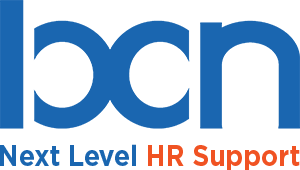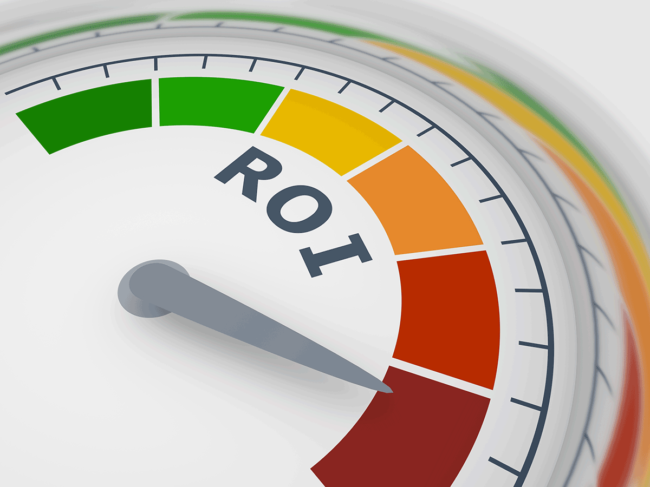If you are considering HR outsourcing, then you want to understand its return on investment (ROI). However, this can be particularly challenging, because many of the benefits are intangible, rather than providing a direct, predictable dollar value. For example, correctly done HR outsourcing can improve employee engagement, which does not translate well to a dollar amount.
It is possible to create a comprehensive calculation, but it requires understanding the different benefits and establishing how to calculate a tangible ROI. It also requires understanding the basics of how to calculate ROI in the first place.
How to Calculate ROI
Calculating ROI is fairly easy if you have tangible figures. To calculate ROI, you must:
- Subtract the initial value of an investment from the final value of the investment.
- Divide the result by the cost of the investment.
- Multiply by 100.
This is easy for more tangible things. For example, if you spend $1,000 on marketing a product and sell $1,300 of the product, your ROI is a healthy 30%. When it comes to intangibles, though, establishing the initial and final value can be hard.
So, how do we establish what the ROI is for outsourcing? Let’s start by looking at the benefits.
The Benefits of HR Outsourcing
Before we can start assigning values to HR outsourcing’s benefits, we need to establish what they are. The highest ROI comes from working with Professional Employer Associations (PEOs), so we will use this as our benchmark. Here are some of the benefits:
Reduced Administrative Burdens.
The outsourcing partner can take care of HR’s mundane administrative activities, such as processing payroll and handling benefits administration. This allows your HR professionals to handle more complicated matters. We can place a value on this fairly easily by recording the amount of time HR staff are spending on these mundane duties before handing them over. You can then calculate those staff-hours and the associated wages.
Reduced Need to Hire Additional Personnel
By partnering with a PEO, you can delay or eliminate the need to hire more full-time HR staff. The cost of this is simple: the salaries and other costs that come with hiring new employees. For example, over the past few years, the median annual salary of an HR assistant hovers around $40,000. The salary of a HR specialist was around $60,000.
More Affordable Benefits
When you partner with a PEO, they become the employer of record for your employees. This does not mean that they get to control your hiring, firing, and other policies. However, it does mean that your employees can be added to their health and retirement plans, allowing you to supply better benefits at a lower cost.
To establish the ROI of this, you should compare what you are paying for benefits now with what the PEO is giving you. In 2019, the average annual cost was $5,711 for a single employee and $14,069 for a family plan. Comparing before and after can give you a solid idea of the ROI.
Improved Compliance
Keeping up on all the various HR laws can be challenging for small companies. A PEO has experience that allows them to do a better job of staying compliant. They can review and note problems with compliance for you and help you fix them quickly, before you end up facing fines or lawsuits.
For example, even a technical violation on Form I-9, which helps establish that workers are in the country legally, can net a fine of as much as $2,332 per violation. This can add up quickly if multiple mistakes are made. Because your outsourcing partner has so much experience, they can easily avoid these mistakes. The ROI of HR outsourcing, then, includes avoiding the costs of fines.
Lowered Turnover
Improved benefits, fewer payroll errors, and compliance all help retain and attract top talent. Reduced turnover means a reduced cost in hiring, training, and onboarding. The total costs of onboarding a new employee, including recruiting, paperwork, training and deferred productivity, are about $4,000 per new hire.
Increased Engagement
The same factors that reduce turnover also increase employee engagement. While this is hard to trace, it does increase productivity and thus profitability. Engaged employees get more work done and do it better. Comparing revenue by year or month can help you isolate the impact of HR outsourcing. Bear in mind that seasonal variation can obscure the true ROI.
So, now you have assigned monetary values to all of these benefits. We can go back to the ROI and do our calculation, dividing those monetary gains by the cost.
ROI of PEOs
Typically, the average ROI for a PEO is 27.2%. Other outsourcing solutions tend to have a much lower ROI, as they don’t give comprehensive benefits. This ignores the money saved from avoiding lawsuits. However, this can be hard to quantify as many firms have no idea how exposed they are before they start outsourcing.
To get a sense of how vulnerable you are to lawsuits, download our checklist “How Vulnerable is Your Business to Lawsuits?“
{{cta(‘df00951d-a42f-4ae6-bd29-87b12218f50d’)}}

